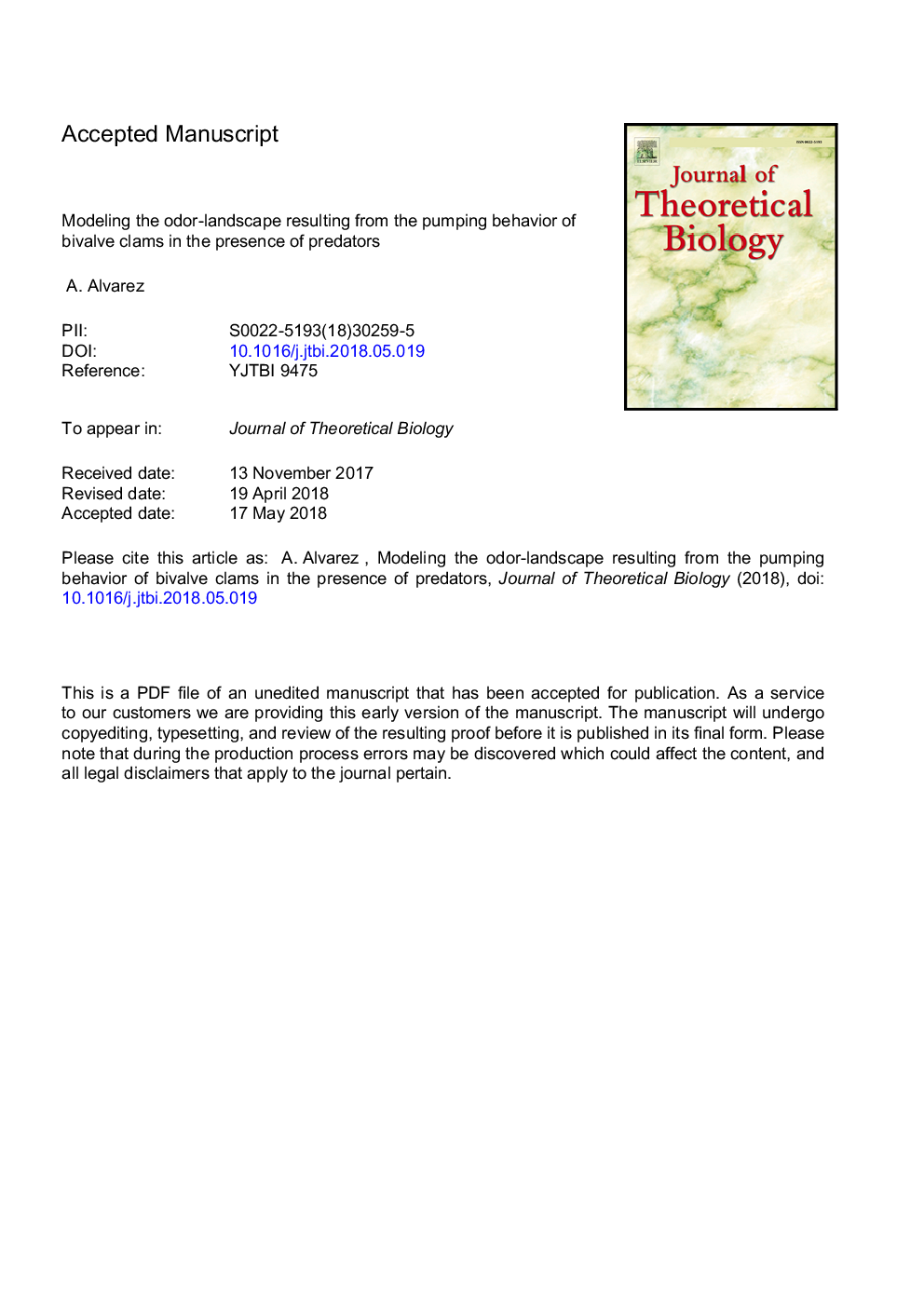| Article ID | Journal | Published Year | Pages | File Type |
|---|---|---|---|---|
| 8876601 | Journal of Theoretical Biology | 2018 | 38 Pages |
Abstract
Motivated by experimental findings, a computational fluid dynamics (CFD) model was used to investigate whether the clam Mercenaria mercenaria may alter its cue downstream variability by an exhalant random pumping behavior. This behavior was hypothesized to occur in the presence of predator chemical signals in order to prevent successful tracking by the predator. Simulated downstream flow and mixing conditions derived from the random nature of the clam exhalant jet in a crossflow were analyzed by computing an intermittency factor, determining the field of finite-time Lyapunov exponents (FTLEs) and identifying the resulting Lagrangian coherent structures (LCSs). Numerical simulations illustrate that the effectiveness of a fluctuating exhalant jet to prevent downstream tracking by a crab, depends on the ratio of the exhalant jet to the crossflow. Specifically, the clam could effectively enhance the downstream dispersion to prevent tracking, but only in the range of parameters where LCSs are generated (jet-to-crossflow ratioâ¯â¥â¯1). Then, the probability of detection is reduced with respect to the case of a less fluctuating exhalant jet.
Related Topics
Life Sciences
Agricultural and Biological Sciences
Agricultural and Biological Sciences (General)
Authors
A. Alvarez,
